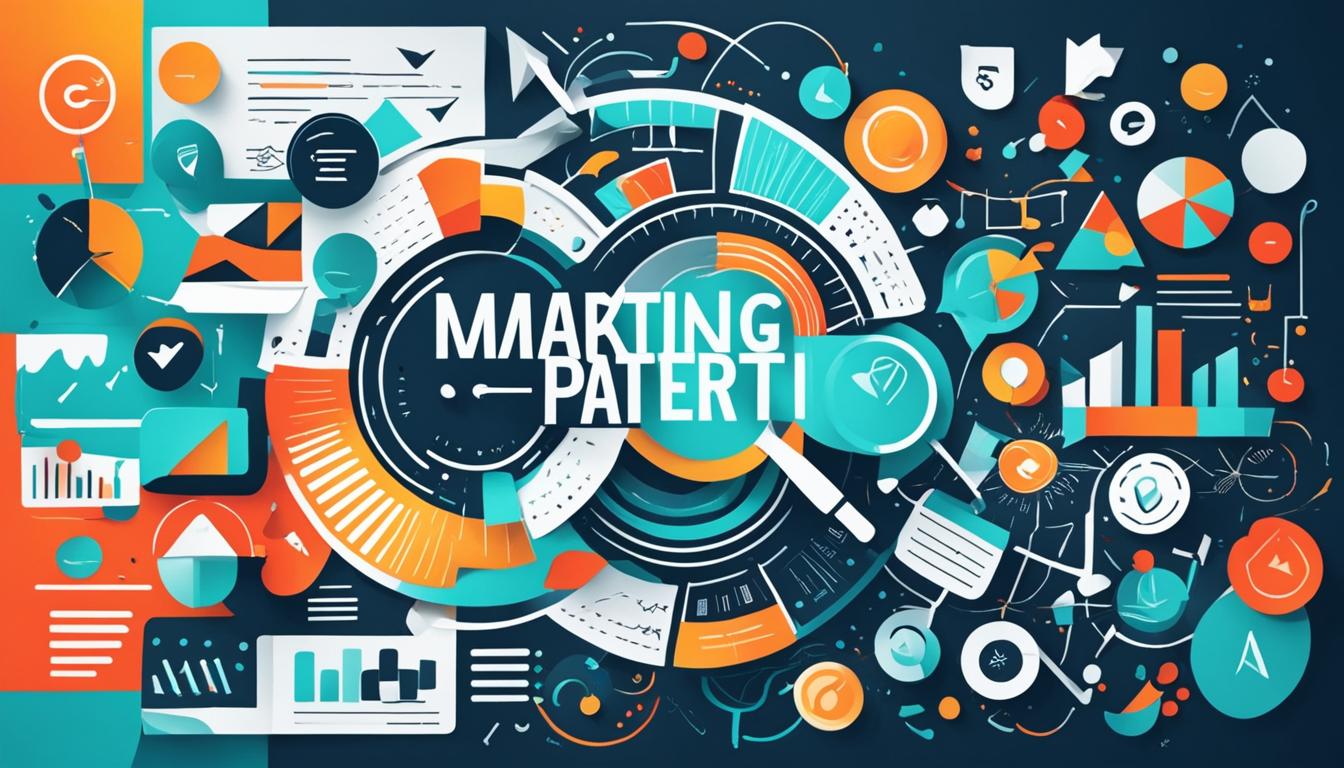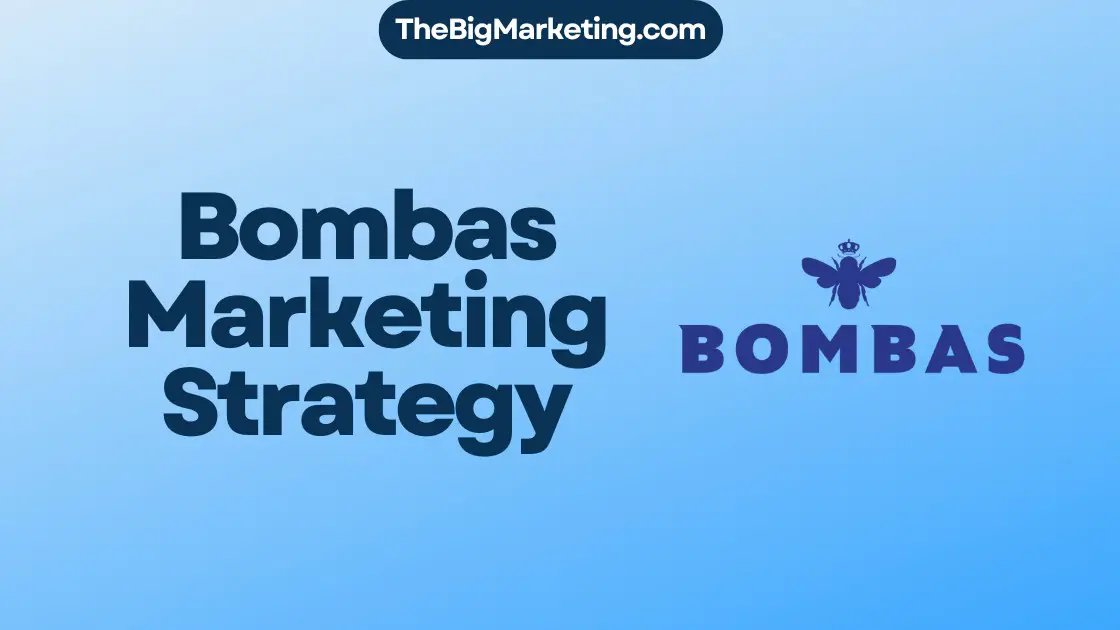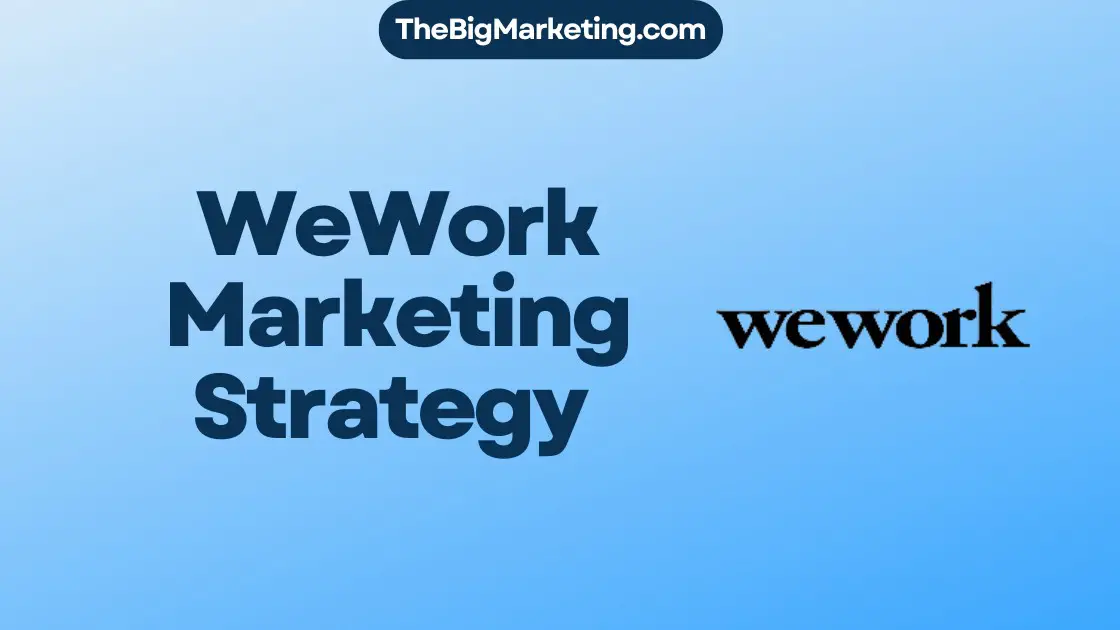Welcome to our comprehensive guide to MSP (Managed Service Provider) marketing strategy in 2024. In this article, we will delve into the various components of marketing that are essential for MSPs to thrive in the digital landscape. From digital marketing and lead generation to content marketing, social media marketing, email marketing, and SEO optimization, we will explore the strategies and tactics that will fuel the growth of your MSP business.
Based on 25 years of agency experience in IT marketing, this guide offers valuable data and insights that are relevant to MSP business owners, sales executives, marketing executives, and practitioners. Whether you are new to MSP marketing or looking to refine your existing strategies, this guide will provide you with the knowledge and resources needed to succeed.
Key Takeaways:
- Developing a comprehensive marketing plan is crucial for MSPs to effectively reach their target audience and achieve business growth.
- Understanding your target audience and conducting market segmentation helps in creating targeted marketing campaigns that resonate with potential clients.
- Collecting and analyzing data is essential for making informed marketing decisions and acquiring prospects with high conversion potential.
- Referral marketing is a powerful tool that can generate high-quality leads and improve brand reputation through word-of-mouth recommendations.
- An effective website that showcases your expertise and offers valuable content is essential for attracting and converting leads.
Approach Overview
The success of an MSP marketing strategy lies in the approach taken to maximize results. This section provides an overview of the key components involved in crafting an effective marketing plan, maximizing referrals, generating leads, and building market awareness.
Marketing Plan
A well-defined marketing plan sets the foundation for success. It outlines the target market segments, services offered, value proposition, and the tactics to be employed in reaching the intended audience. A comprehensive marketing plan ensures a clear and focused approach to promoting the MSP’s offerings.
Maximizing Referrals
Word-of-mouth plays a pivotal role in expanding an MSP’s reach. By delighting existing customers and providing exceptional service, MSPs can maximize referrals from satisfied clients. Implementing strategies to encourage testimonials and positive reviews further enhances the referral process, building trust and credibility in the market.
Lead Generation
Generating high-quality leads is essential for MSPs to fuel their sales pipeline. Through targeted marketing efforts, such as content creation, SEO optimization, and effective lead capture mechanisms, MSPs can attract and engage potential customers with valuable information. A strong lead generation strategy helps create a steady stream of interested prospects.
Building Market Awareness
Building market awareness involves establishing the MSP as a trusted authority in the industry. By leveraging thought leadership content, social media engagement, and strategic partnerships, MSPs can increase their visibility and credibility in the market. Building market awareness not only attracts potential customers but also fosters trust among existing clients.
To ensure the success of an MSP marketing strategy, a holistic approach must be taken. By carefully considering and implementing these key components, MSPs can maximize their marketing efforts, generate leads, and build a strong market presence.
Marketing and Segment Selection
Understanding the target audience and conducting market segmentation are crucial steps in developing a successful MSP marketing strategy. By identifying the target customer’s industry, company size, and pain points, MSPs can create market segments that align with their business goals and differentiate their services.
To begin, MSPs must thoroughly analyze their target audience and build detailed customer profiles. This involves collecting data on key demographic and psychographic characteristics, as well as their specific pain points and challenges. By understanding their customers on a deeper level, MSPs can tailor their messaging and offerings to effectively address their needs.
Once the target audience is well-defined, the next step is market segmentation. This process involves dividing the broader market into smaller, more manageable segments based on relevant criteria such as industry, company size, or geographic location. The goal is to identify segments that offer high potential for success and align with the MSP’s unique value proposition.
Benefits of Market Segmentation:
- Enhanced targeting: Market segmentation allows MSPs to focus their marketing efforts on specific customer segments that are most likely to benefit from their services. This ensures that marketing investments are optimized and yields higher conversion rates.
- Effective messaging: By tailoring marketing messages to specific market segments, MSPs can speak directly to the pain points and needs of their target audience. This increases the relevance and effectiveness of their communication, ultimately driving engagement and conversion.
- Competitive advantage: Thorough market segmentation enables MSPs to differentiate themselves from competitors by honing in on niche markets or underserved segments. This allows for the development of unique value propositions that resonate with specific customer needs.
By implementing a strategic approach to marketing and segment selection, MSPs can optimize their marketing efforts and increase their chances of success in high-propensity segments.
| Market Segment | Industry | Company Size | Pain Points |
|---|---|---|---|
| Segment A | IT Services | SMBs | Security threats, limited resources |
| Segment B | Finance | Enterprise | Data privacy regulations, automation challenges |
| Segment C | Healthcare | SMBs | Compliance requirements, interoperability issues |
Data Strategy and Acquisition
Developing a solid data strategy is a fundamental component of a successful MSP marketing campaign. This section focuses on the significance of gathering comprehensive data on companies and contacts to effectively target prospects and meet their specific needs. It also highlights the importance of acquiring information about competitors and their contract end dates to gain a competitive edge in the market.
When implementing a data strategy for your MSP marketing efforts, it is advisable to obtain data from reputable third-party providers. These providers have access to a vast array of prospect details, enabling you to gain valuable insights into your target audience. By collecting data that includes not only basic contact information but also specific details about prospects and their pain points, you can tailor your marketing messages to resonate with them on a deeper level.
The acquisition of competitor analysis data is equally essential. Understanding your competitors and their contract end dates allows you to identify opportunities for engaging potential clients who may be dissatisfied with their current provider or looking for alternatives. By staying informed about the competition, you can position your MSP strategically and offer solutions that differentiate you from your rivals.
Incorporating a data strategy into your MSP marketing plan is a long-term investment. It is crucial to ensure that your customer-facing team is trained in effectively utilizing the acquired data. They should be adept at segmenting the data, analyzing it, and using it to guide targeted marketing efforts. This data-driven approach enhances your ability to reach the right prospects at the right time, increasing the effectiveness of your marketing campaigns and improving your overall success rate.
Benefits of a Data-Driven Strategy:
Implementing a data strategy and acquiring relevant prospect and competitor data provide several advantages for your MSP marketing efforts:
- Increased precision in targeting and personalization of marketing messages
- Better understanding of prospect pain points and needs
- Improved differentiation from competitors
- Enhanced lead generation and conversion rates
- More effective allocation of marketing resources
A data-driven strategy empowers your MSP to make informed decisions, optimize your marketing initiatives, and ultimately drive business growth. By utilizing detailed prospect details and competitor analysis, your marketing team gains a competitive advantage in the market.
Referral Marketing
Referral marketing is a powerful tool for MSPs to generate new leads. By delighting existing customers and leveraging their word-of-mouth recommendations, MSPs can tap into a network of potential clients who are more likely to convert.
One of the key strategies to maximize referrals is to build a professional website that showcases the MSP’s expertise and customer satisfaction. This website should provide clear information about the services offered, success stories, and contact details.
Staying engaged with the existing network through social media platforms is another effective way to generate referrals. Active participation in discussions, sharing relevant content, and responding to comments can help maintain relationships and keep the MSP top-of-mind.
Testimonials and Reviews
Testimonials and reviews play a crucial role in referral marketing. By asking satisfied customers to provide testimonials, MSPs can showcase their track record of customer satisfaction and build trust with potential clients. These testimonials can be displayed prominently on the website and shared through email marketing campaigns. Writing compelling case studies that highlight the MSP’s expertise and successful outcomes can also strengthen referral marketing efforts.
Additionally, encouraging customers to provide reviews on platforms like Google, Yelp, and industry-specific forums can significantly boost the MSP’s reputation and credibility. Positive reviews from satisfied customers act as social proof to potential clients, making them more likely to choose the MSP over competitors.
Overall, referral marketing is a cost-effective and powerful strategy for MSPs to expand their customer base. By investing in customer satisfaction and actively seeking referrals, MSPs can tap into the power of word-of-mouth marketing and unlock new opportunities for business growth.
Website
A professional website plays a critical role in the success of MSP marketing. To effectively engage prospects and showcase your expertise, a clean and aesthetically pleasing website is essential. This visually appealing online platform serves as the face of your business, enabling you to communicate your services and establish credibility.
When designing your professional website, it’s important to include relevant content that resonates with your target audience. In-depth product and service pages provide comprehensive information about your offerings, helping prospects understand the value you bring to the table. Additionally, thought leadership blog posts enable you to showcase your expertise and position your MSP as a trusted industry leader.
Key website tips include providing a clear path for users to navigate through your site. This can be achieved by using intuitive menus, easy-to-find contact information, and prominent calls-to-action. Additionally, including trust signals, such as testimonials or certifications, on your “About Us” page helps build credibility and fosters trust with potential clients.
Lastly, make sure to create informative product and services pages that highlight the unique features and benefits of your offerings. This helps prospects understand why they should choose your MSP over competitors.
A professional website is an indispensable tool for attracting and converting leads. Invest in your online presence, craft compelling content, and present your expertise in a visually appealing manner to maximize the impact of your MSP marketing efforts.
SEO and Paid Search
Search engine optimization (SEO) and paid search play critical roles in driving visibility and generating leads for MSP marketing. By optimizing your website and content for search engines and leveraging pay-per-click (PPC) advertising, you can improve your online presence and attract targeted traffic to your MSP business.
One essential aspect of SEO is conducting thorough keyword research. By identifying the keywords and phrases that potential customers are using to search for services like yours, you can strategically incorporate them into your website content and improve your chances of ranking higher in search engine results.
Keyword research also helps you understand the competitive landscape and identify untapped opportunities for targeting specific keywords that your competitors may be overlooking. This valuable insight can guide your content creation and optimization efforts, helping you reach and engage your target audience effectively.
Integrating relevant keywords into your website content, meta tags, headers, and image alt tags can positively impact your search engine rankings. However, it’s crucial to strike a balance and ensure that your content remains natural, valuable, and informative for your visitors.
Furthermore, investing in PPC advertising, such as Google Ads, allows you to directly target specific keywords and display your MSP business prominently on search engine results pages. PPC advertising offers immediate visibility and can be especially effective for generating leads and driving traffic to specific landing pages.
When implementing PPC campaigns, thorough keyword research is essential to identify the most relevant and cost-effective keywords to target. Continually monitoring and optimizing your PPC campaigns will help you maximize your return on investment and attract high-quality leads to your MSP business.
Lead Generation
Lead generation is a crucial aspect of a successful MSP marketing strategy. By actively seeking out potential customers, MSPs can build a strong sales pipeline to fuel business growth. However, it requires dedicated time and investment to effectively generate and nurture leads.
Proactive lead generation involves identifying and engaging with potential clients who fit the target market segment. This can be achieved through various marketing tactics, such as content marketing, social media campaigns, and targeted advertising.
The goal is not only to generate immediate leads but also to cultivate long-term relationships with prospects. Nurturing leads involves providing relevant and valuable information to prospects at different stages of their buyer’s journey, building trust and positioning the MSP as a knowledgeable industry leader.
Market awareness plays a significant role in lead conversion. By creating a strong market reputation, potential clients are more likely to choose the MSP over competitors. Good conversion rates can be achieved by consistently demonstrating expertise, showcasing success stories, and addressing pain points.
When implementing lead generation strategies, it is crucial to track and analyze the effectiveness of each tactic to optimize future efforts. By continuously refining lead generation processes, MSPs can achieve steady growth and success in the highly competitive market.
| Benefits of Proactive Lead Generation | Impact on Sales Pipeline | Market Awareness and Conversion Rates |
|---|---|---|
| 1. Increased brand visibility | 1. Consistent flow of qualified leads | 1. Establishes trust and credibility |
| 2. Opportunity for targeted outreach | 2. Higher conversion rates | 2. Differentiates the MSP from competitors |
| 3. Builds a network of potential clients | 3. Shorter sales cycles | 3. Positions the MSP as an industry expert |
| 4. Greater control over lead generation | 4. Consistent revenue growth | 4. Increases market share |
Advertising
Advertising plays a vital role in reaching target audiences and increasing brand awareness. By selecting the right advertising channels, businesses can effectively communicate their message and engage with their desired customer base. It is important to consider the preferences and engagement levels of the target customers when deciding on advertising channels. Additionally, cost-effectiveness should be a key factor in planning advertising campaigns to ensure efficient allocation of resources.
Advertising Channels
There are various advertising channels available for businesses to leverage. Choosing the right mix of channels can maximize reach and impact. Some popular advertising channels include:
- Social Media: Social media platforms like Facebook, Instagram, and LinkedIn offer highly targeted advertising options, allowing businesses to reach specific demographics and interest groups.
- Print: Traditional print advertising in newspapers and magazines can still be effective for certain target audiences, particularly in local markets.
- Billboards: Out-of-home advertising through billboards and signage can create brand visibility and increase exposure in high-traffic areas.
Each advertising channel has its own unique benefits and considerations. By understanding the target audience and their preferred media consumption habits, businesses can select the most appropriate channels to maximize advertising impact.
Cost-effectiveness
When planning advertising campaigns, cost-effectiveness should be a key consideration. Evaluating the return on investment (ROI) of each advertising channel can help businesses make informed decisions and optimize their marketing budget. It is important to measure the engagement and conversion rates of different advertising campaigns to gauge their effectiveness in driving desired outcomes.
Furthermore, cost-effective advertising strategies include targeting specific audience segments, utilizing data-driven insights, and optimizing ad placements to minimize unnecessary expenses. By continuously monitoring and analyzing the performance of advertising campaigns, businesses can refine their strategies for improved cost-effectiveness and better results.
Overall, advertising is an essential component of a comprehensive marketing strategy. By selecting the right advertising channels and considering cost-effectiveness, businesses can effectively reach their target audience, increase brand engagement, and drive customer actions.
Social Media
Social media marketing plays a crucial role in an effective MSP marketing strategy. To maximize your reach and engagement, it is essential to maintain an active presence on relevant social media platforms. Platforms such as Facebook, LinkedIn, and Instagram offer excellent opportunities to connect with your target audience and showcase your expertise.
Creating compelling and valuable content is key to driving engagement on social media. Tailor your content to resonate with your target audience and address their pain points. Utilize a mix of informative articles, thought-provoking infographics, and engaging videos to capture their attention and establish thought leadership in the industry.
Engagement is a vital aspect of social media marketing. Respond promptly to comments and messages to nurture relationships with your audience. Encourage discussions and ask for their opinions to foster an interactive community. By actively engaging with your followers, you can build brand loyalty and generate valuable leads.
It’s also worth exploring unconventional platforms such as TikTok and YouTube, depending on your target audience and content strategy. These platforms offer unique opportunities to showcase your creativity and connect with a wider audience.
Nurture Marketing
Nurture marketing plays a crucial role in enhancing the customer experience and building strong relationships. By tailoring the customer journey and optimizing touchpoints, MSPs can provide intuitive and user-friendly experiences that leave a lasting impression.
Customer satisfaction is pivotal in retaining clients and driving retention. Satisfied customers are more likely to become brand advocates, leading to increased word-of-mouth referrals and organic growth. By prioritizing customer satisfaction throughout the entire customer journey, MSPs can foster long-term loyalty and drive business success.
To excel in nurture marketing, MSPs can leverage personalization, automation, and AI technologies. Personalization allows for tailored communications and offerings, creating a more personalized customer experience. Automation helps streamline processes and ensures timely engagement with customers at different stages of the journey. AI technologies can enable data-driven insights, enabling MSPs to understand customer behavior and anticipate their needs.
Ultimately, nurture marketing goes beyond the initial sale and focuses on building lasting relationships. By providing exceptional experiences and continuously engaging customers, MSPs can differentiate themselves in a competitive landscape and drive sustainable growth.
Ways to Enhance Nurture Marketing
| Type | Strategy |
|---|---|
| Personalization | Customize communications and offerings based on customer preferences and behaviors. |
| Automation | Automate processes to deliver timely and consistent engagement at every touchpoint. |
| AI Technologies | Utilize AI-powered tools to gain insights, anticipate customer needs, and deliver proactive support. |
| Continuous Engagement | Stay connected with customers through relevant content, surveys, and personalized follow-ups. |
Conclusion
Throughout this comprehensive guide to MSP marketing strategy in 2024, we have highlighted the importance of implementing effective MSP marketing strategies for business growth. Developing a robust marketing plan, understanding target audiences, leveraging data, referrals, and online presence, along with utilizing various marketing tactics are key components to drive success.
We have addressed the challenges faced by MSPs in marketing and provided insights into future trends and opportunities in MSP marketing. By implementing these strategies, MSPs can stay ahead of the competition and capitalize on emerging trends to fuel their business growth.
As MSPs continue to evolve and adapt to the ever-changing digital landscape, it is essential to stay updated with the latest marketing strategies and techniques. By harnessing the power of digital marketing, MSPs can reach their target audiences effectively and achieve their business goals.
This comprehensive guide serves as a valuable resource for MSPs looking to navigate the future of MSP marketing and drive business growth through effective marketing strategies. Implementing these strategies will not only help MSPs generate leads and increase market awareness but also position them for long-term success in the dynamic MSP market.







